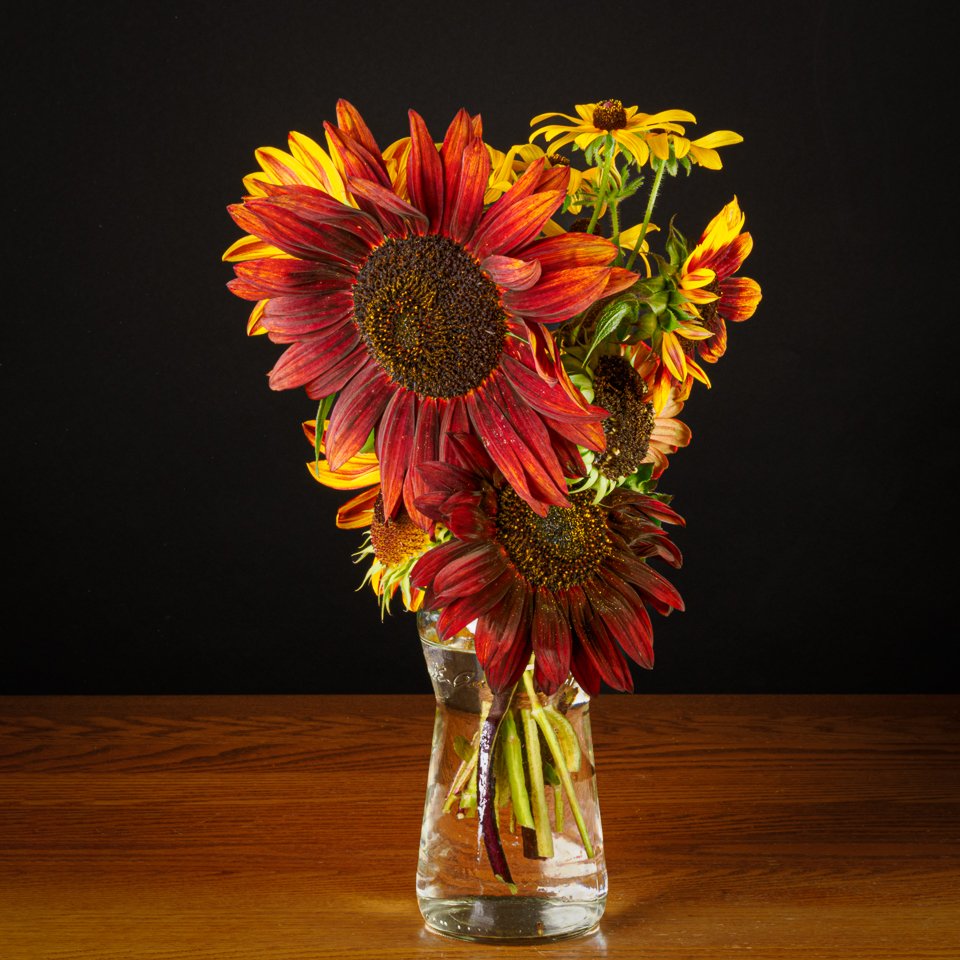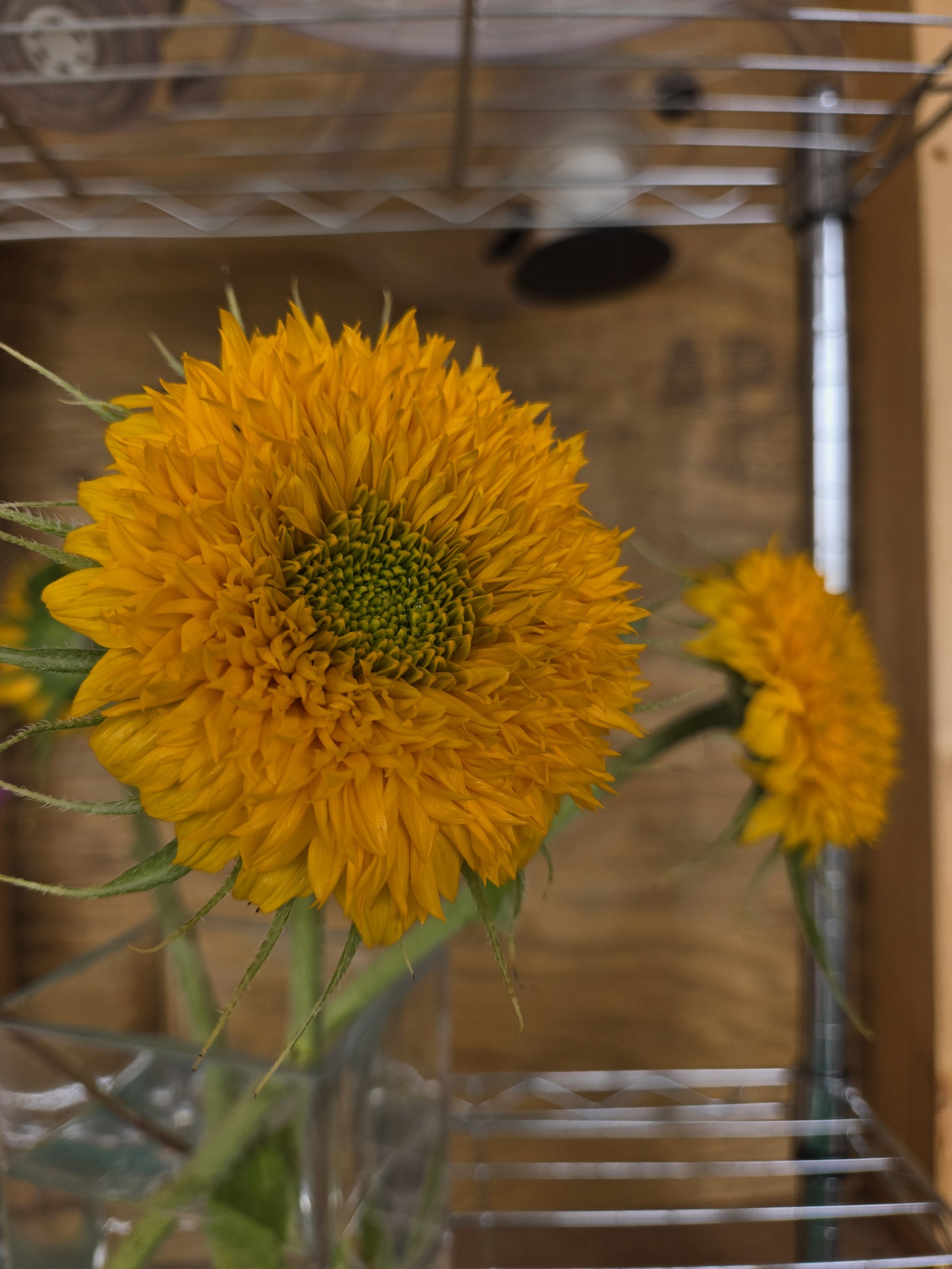Celebrate the Sunflower
The attack on President Zelenskyy in the Oval Office by President Trump and Vice President Vance on February 28, 2025, left a profound impact on me and, I believe, on many individuals across the globe. This distressing event underscores the harsh reality of how cruel and toxic our world can be, especially toward those who are genuinely striving to make a positive difference. Witnessing such behavior from leaders who are expected to promote goodwill and diplomacy was not only shocking but also a stark reminder of the challenges faced by those who advocate for justice and peace in the face of adversity. It raises questions about the state of leadership and the ethical responsibilities that come with power.
Ukraine has faced unprecedented challenges throughout its tumultuous history. From its origins under Russian rule to the invasion by the Nazis, the Chernobyl disaster, the annexation of Crimea, and the full-scale illegal invasion of their sovereign nation in 2022, the struggles have been immense, leaving their history feeling tragic and their future uncertain.
Yet, I find hope in the sunflower, Ukraine’s national flower. This remarkable flower is a symbol of persistence, forgiveness, and resilience, thriving against all odds. In this blog post, I want to celebrate the simple sunflower as a natural hero of resilience, share its history, and encourage you to consider growing it in your own garden.
A Brief History:
The sunflower (Helianthus), known as “sunyashnikiis” in Ukrainian, stands as a vibrant symbol of Ukraine, embodying its culture, heritage, and spirit. These bright yellow blooms, first imported from North America in the 1800s, have flourished and transformed Ukraine into the world’s leading producer and exporter of sunflower oil and seeds.
In addition to the breathtaking fields of sunflowers, this flower enriches Ukrainian traditions. Girls weave sunflowers into beautiful wreaths called “venki” and create stunning folk art known as “petrykivka.” Embroidered on clothing and painted on furniture, the sunflower radiates the warmth and energy of the sun, firmly establishing its identity with Ukraine.
Originating in the Americas around 1000 BC, sunflowers have always been a source of inspiration. They serve both as decorative elements and versatile resources, from medicinal uses to nourishing snacks. Sunflower oil has illuminated kitchens and beauty routines, while stalks have helped to build shelters.
Although sunflowers began in the Americas, they found their commercial heart in Russia and Ukraine, gaining prominence as the Orthodox Church approved sunflower oil for Lent, highlighting their significance in daily life.
Displaying sunflowers has become a powerful symbol of solidarity with the Ukrainian people during these challenging times.
First Lady Jill Biden wore a dress featuring a sunflower sewn onto the right sleeve after Russia’s invasion of Ukraine in 2022. From Mexico City to Caracas, protesters have taken to the streets, holding sunflowers high to condemn Russia’s actions. In London, sunflowers rise proudly from barricades in front of the Sunflowers for Peace charity, which organizes vital aid for Ukrainians. Meanwhile, in Reno, Nevada, a public art piece spells out “BELIEVE,” with sunflowers emerging from it, bringing hope.
Since February 24, 2022, the first day of the invasion, the world has embraced the association between sunflowers and Ukraine. That day, Ukraine World shared a poignant video showing a Ukrainian woman in Henychesk giving sunflower seeds to Russian soldiers, telling them to keep the seeds in their pockets, so flowers may grow where they fall.
Throughout Ukraine’s history, sunflowers have stood as symbols of peace. In June 1996, to celebrate Ukraine’s renunciation of nuclear weapons, U.S., Russian, and Ukrainian defense ministers planted sunflowers at a missile base in southern Ukraine’s Pervomaysk. This ceremony marked Ukraine’s brave decision to abandon the world’s third-largest nuclear arsenal, while also achieving a significant U.S. strategic goal: preventing the proliferation of nuclear powers.
The sunflower played a fascinating role in the cleanup efforts following the Chernobyl disaster. After the nuclear incident in 1986, sunflowers were planted at Chernobyl to help remove radioactive cesium and strontium from the soil and water. This method is known as phytoremediation, which involves using plants to extract toxins and metals from the environment.
Watch his informative video on the beneficial properties of sunflowers and how they were used at nuclear meltdown sites.
Decades later, amidst conflict and uncertainty, the power of sunflowers as symbols of peace endures. Their worldwide emergence calls upon leaders to cultivate the seeds of a more peaceful future. Rich in meaning, sunflowers embody various ideals across cultures. In Greek mythology, they represent adoration and loyalty. In China, they symbolize good luck, longevity, and vitality. For Native Americans, they signify provision and harvest. One thing is consistent: the sunflower shines as a joyful, uplifting flower that brightens spirits and enriches lives. In the destruction zones of Chernobyl and Fukushima, sunflowers were resilient and prolific in an impossible situation.
Why grow sunflowers?
You should grow sunflowers because they are beautiful, attract pollinators, and improve soil health.
Result of saved seed. Hybrid of unknown genetics as a result of open pollination - HGH 2024
Beauty
Sunflowers are iconic and add cheer to gardens with their golden blooms that face the sun
Pollinators
Sunflowers attract bees, butterflies, and birds
The birds that eat the sunflower seeds also help control insects that might harm your crops
Soil health
Sunflowers are heavy feeders and need nutrient-rich soil, but they extract toxins from the soil and store it in their tissues.
Sunflowers have long tap roots that need to go several feet into the ground, which can be beneficial for breaking up hard, compact soils.
Other benefits
Sunflowers are great for companion planting. Plant with lettuce, corn and carrots to name a few. Visit this link for a more comprehensive list.
The leaves of sunflowers can be used as fodder
The seeds contain oil and are used for food
Sunflower seeds are a source of many vitamins and minerals that can support your immune system. Sunflower heads that are not quite mature, can be roasted and eaten. Sunflowers can also be grown as microgreens to add to salads, sandwiches, etc.
Seed saving is easy and the seeds are prolific and hardy.
Sunflowers are very easy to grow, can be direct sown, or started indoors for earlier blooms.
Pro tip: pinching sunflowers after they have a few true leaves will encourage “branching” and you will get more blooms on one plant!
How to Grow Sunflowers!
To grow sunflower seeds, you can prepare the soil, plant the seeds, and water regularly. Sunflowers are SUPER EASY. These are tips for getting the best outcome, but truly they are not picky! They will pretty much grow anywhere.
Chocolate Variety
Prepare the soil for direct sowing
Loosen the soil with a garden fork or tiller
Add compost or well-rotted manure to improve fertility
Choose a location with good drainage
Follow instructions on seed packets for plant spacing… or not…
If you plant seeds further apart according to plant spacing recommendations, you likely will need to trellis taller varieties. If you decide f**k it, I don’t care about spacing, the sunflowers that grow in a dense patch will hold each other up, but wont get as tall, and likely will also produce smaller blooms.
So the choice is yours and what goal you have in mind! If you are looking to save seed for your own culinary consumption, probably best to space out your plants at least 10-12 inches apart or more to get those big heads. If your goal is cut flowers, densely planted sunflowers produce better flowers for vases and bouquets.
Plant the seeds indoors
Start seeds 4 weeks before the last frost date. For Zone 3, May 24 is usually our last day of frost.
Poke a hole in the soil with your finger about 2x the width of the seed deep.
Drop a seed into the hole
Cover with a little soil
Water the soil
Place in a warm, sunny spot.
watch intently and impatiently for weeeeeks!! Use a fan to encourage stem strength while growing indoors to prep the little guy for the great outdoors.
After he danger of frost has past, harden off and transplant into your sunny spot of the garden!
Water and care for the plants
Keep the soil moist until the seeds germinate
Stake taller varieties if needed, but if you plant them densely they will hold each other up
Feed regularly with a nitrogen-rich fertilizer to encourage height
Harvest the seeds
When the sunflower heads turn brown, cut them off
Hang them in a dry, airy place
Rub the seeds to loosen them when they are dry
Tips
Sunflowers prefer soil that is slightly acidic to neutral
There are many varieties of sunflowers, including dwarf and tall and many different colors!
Teddy Bear Sunflower - dwarf variety
Sources:
Berkeley Florist Supply. (2022, March 3). The National Flower of Ukraine. https://www.berkeleyfloristsupply.com/blog/the-national-flower-of-ukraine/#:~:text=The%20sunflower%20(Helianthus)%2C%20called,decorative%2C%20they%20had%20several%20uses.
Waxman, O. B. (2022, March 4). The history behind sunflowers in Ukraine. Time. https://time.com/6154400/sunflowers-ukraine-history/





